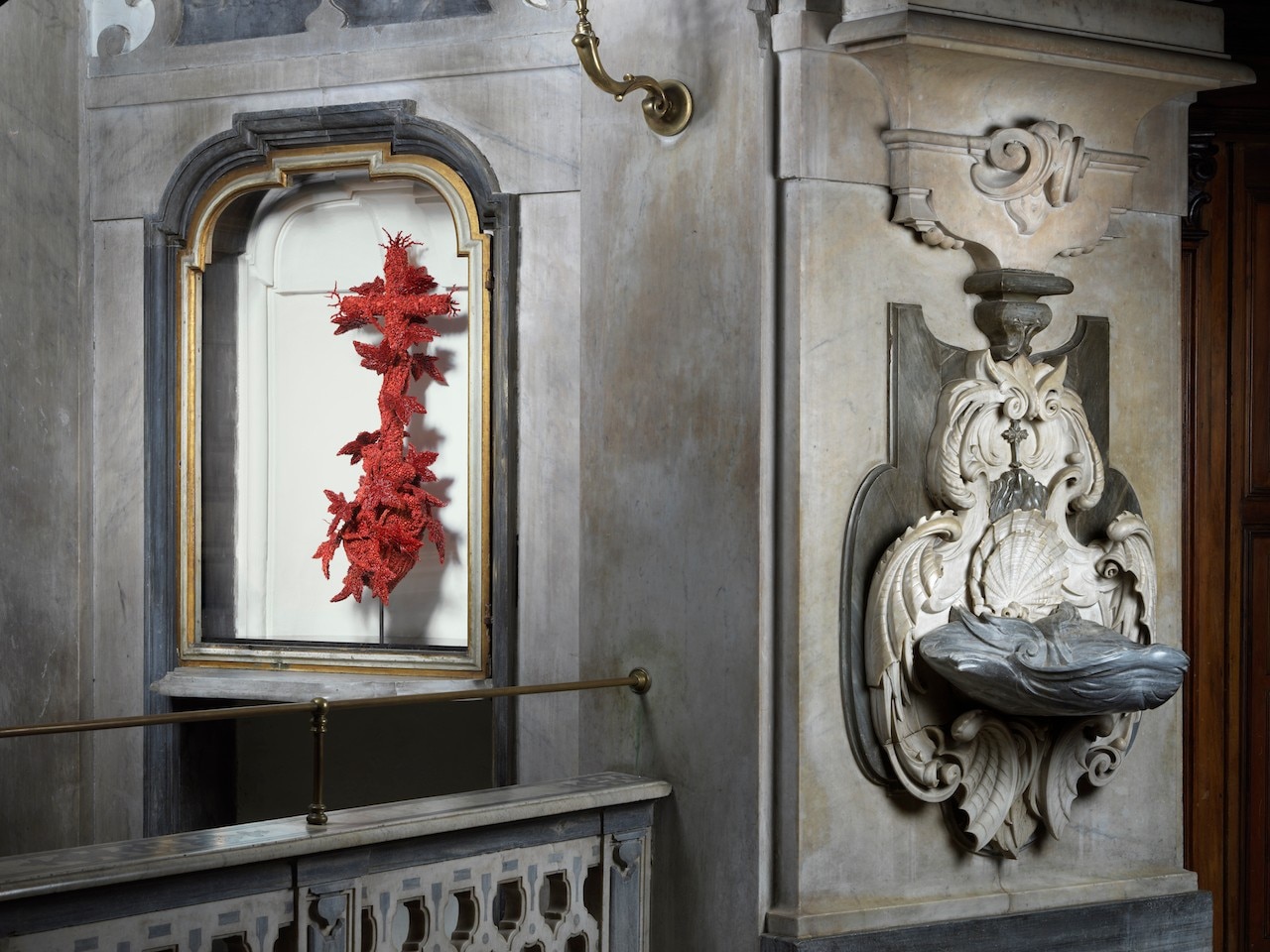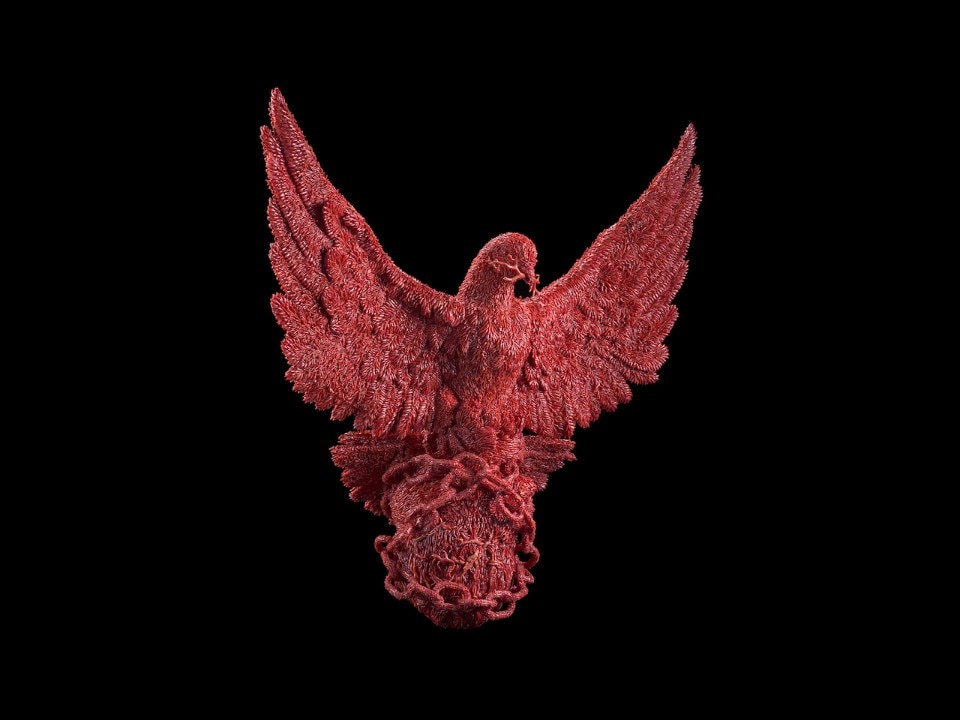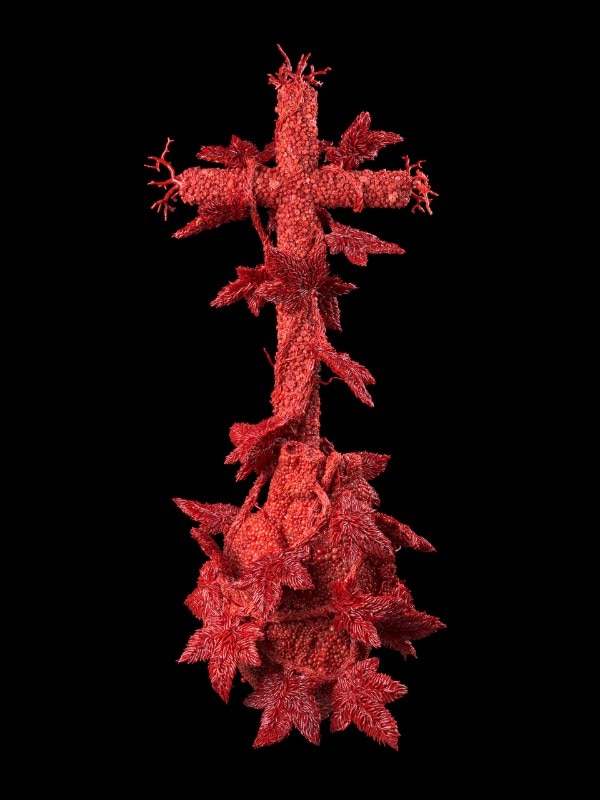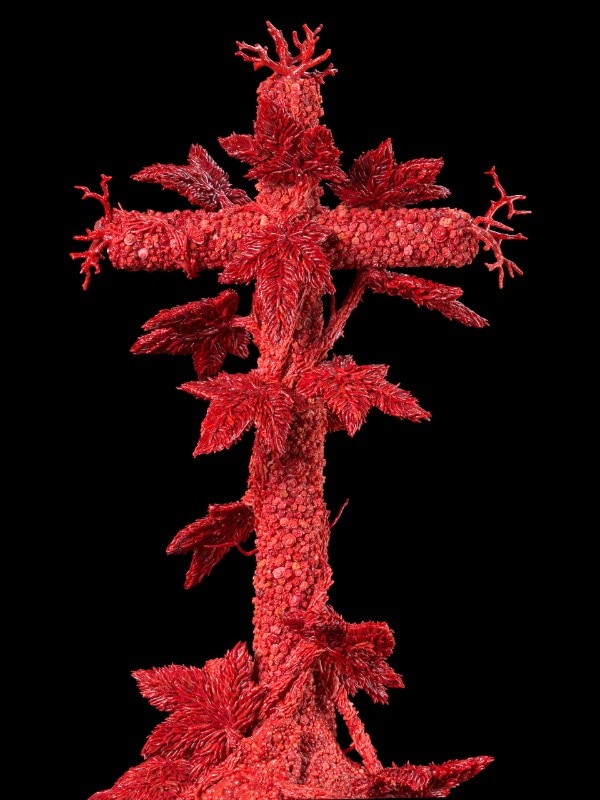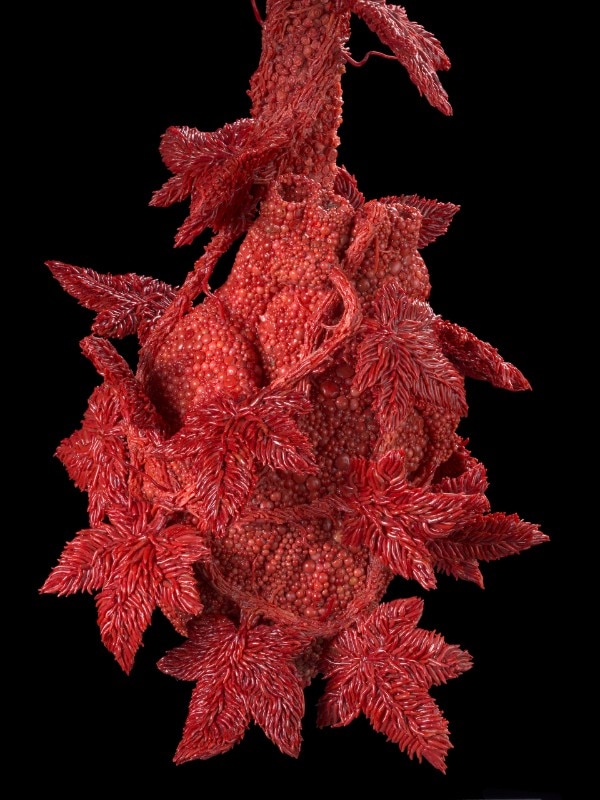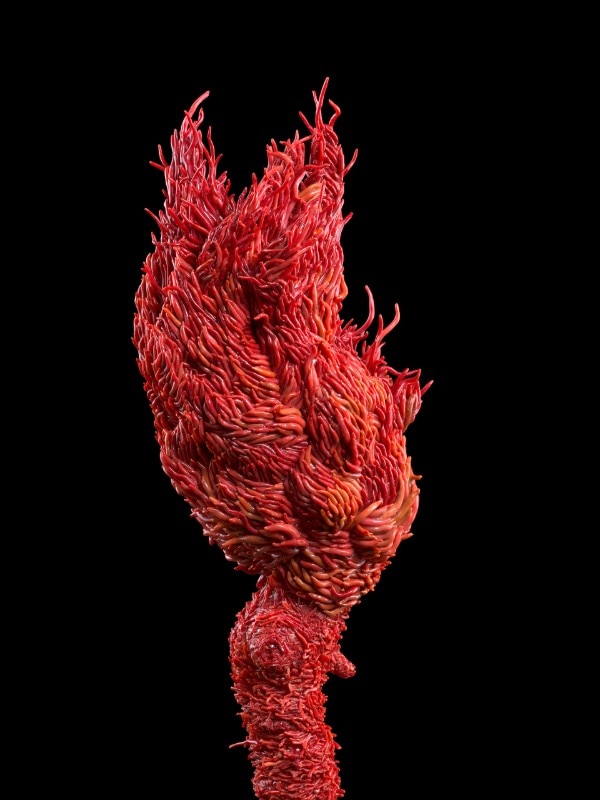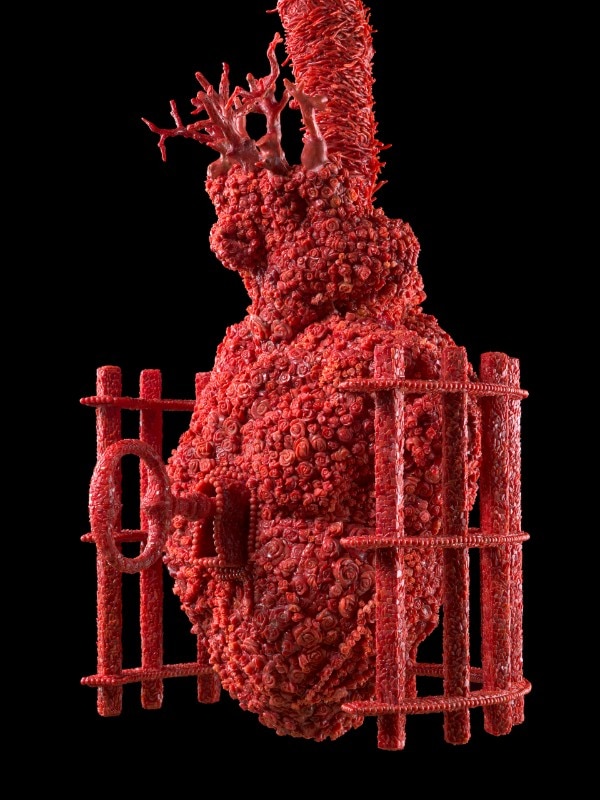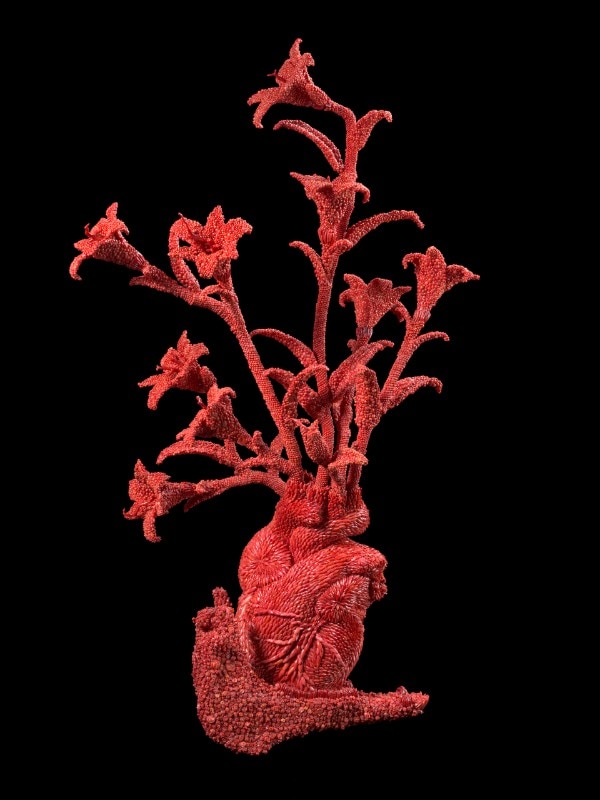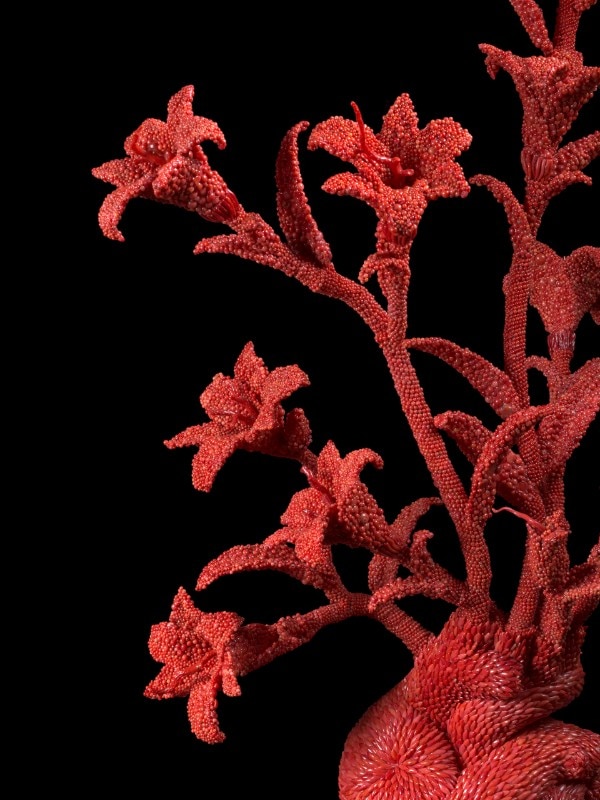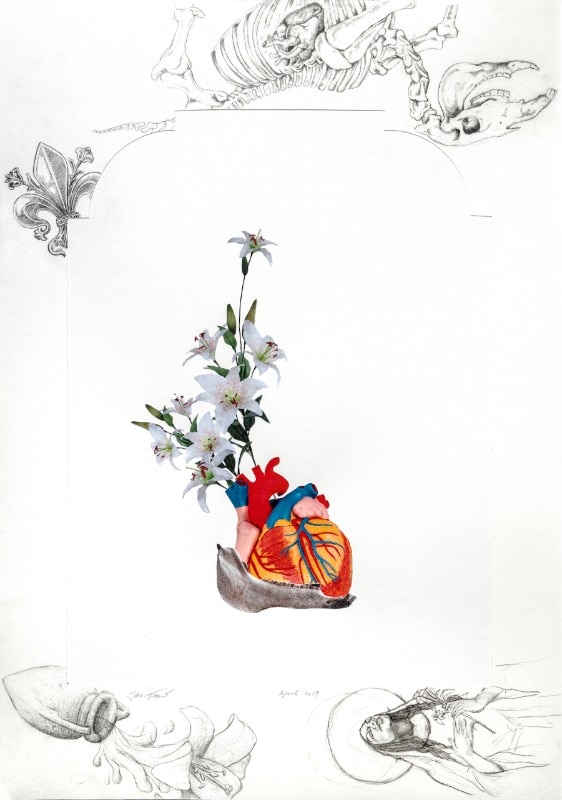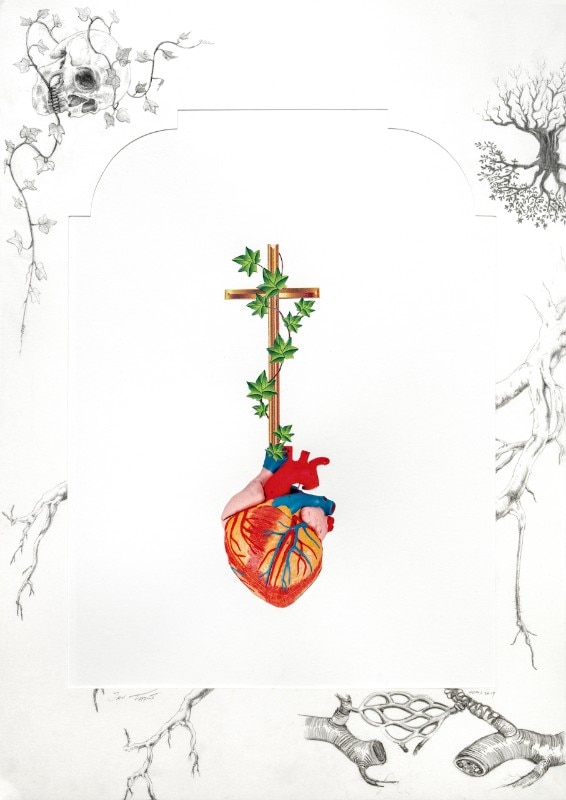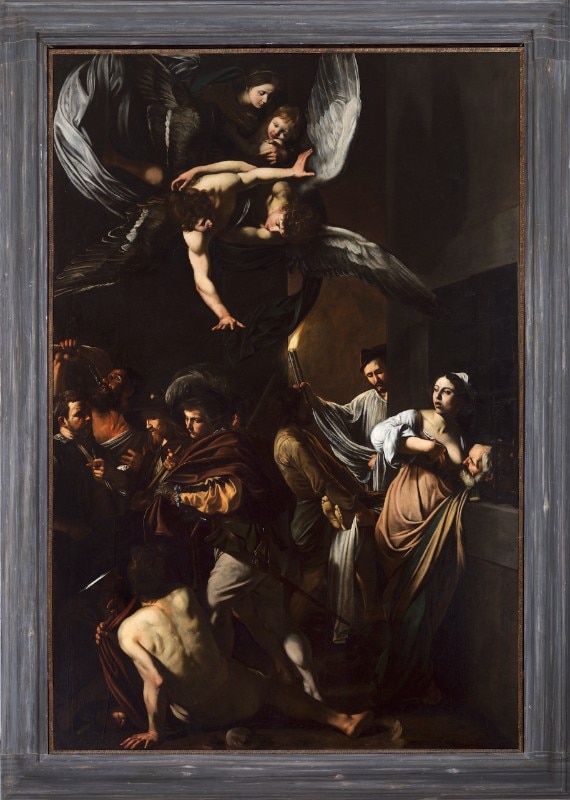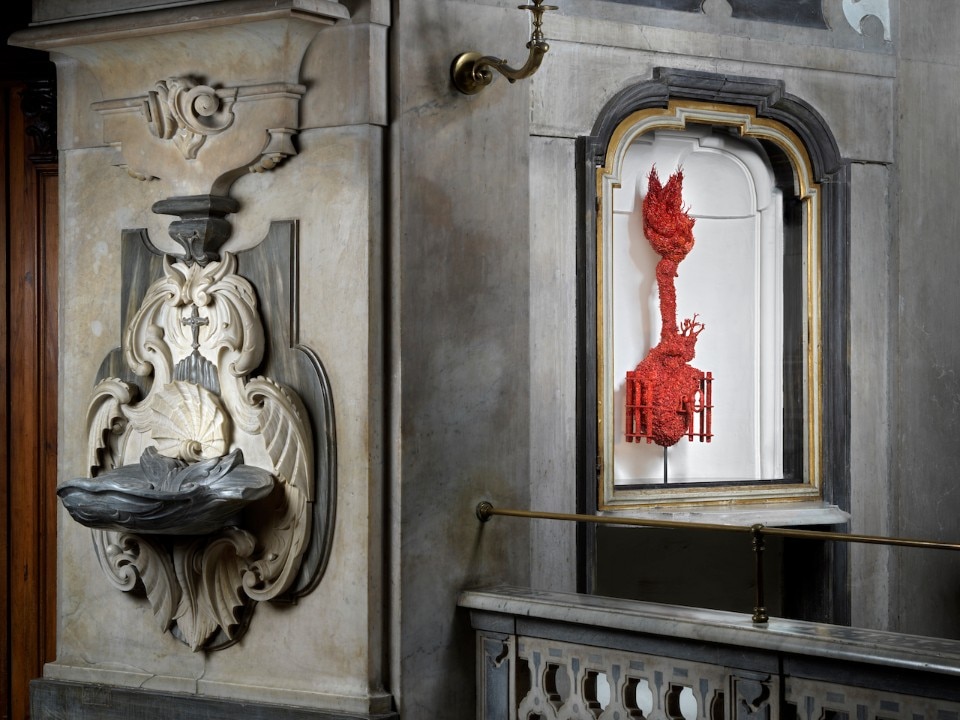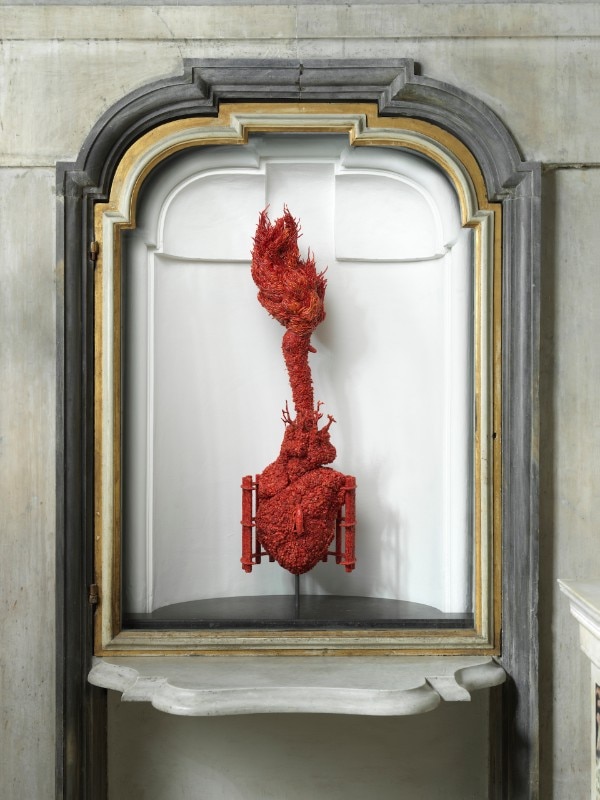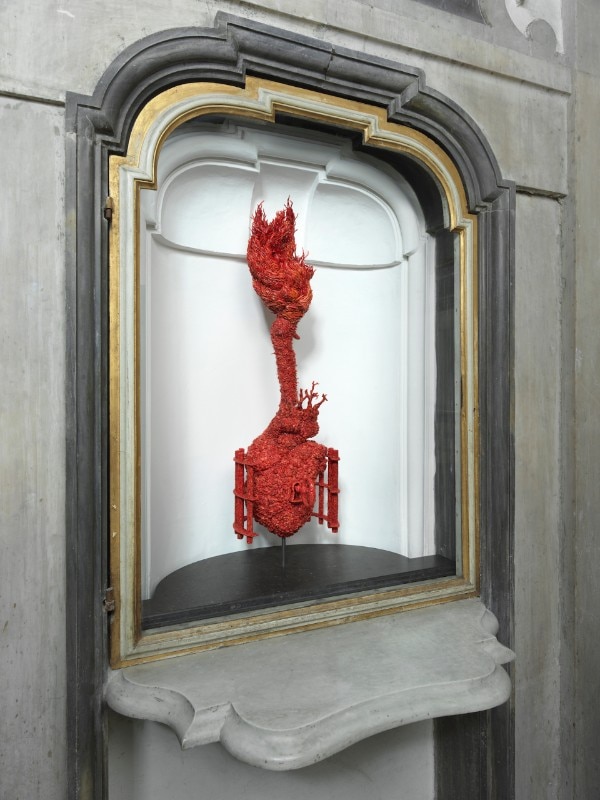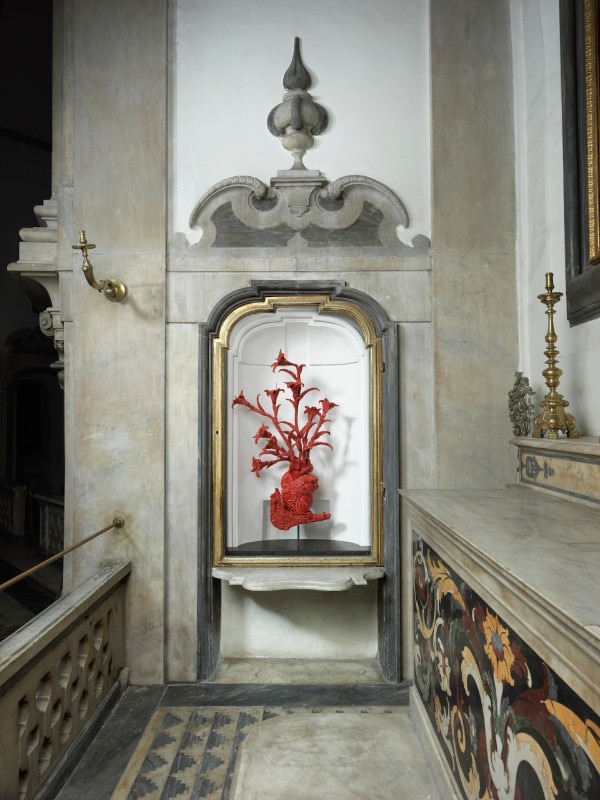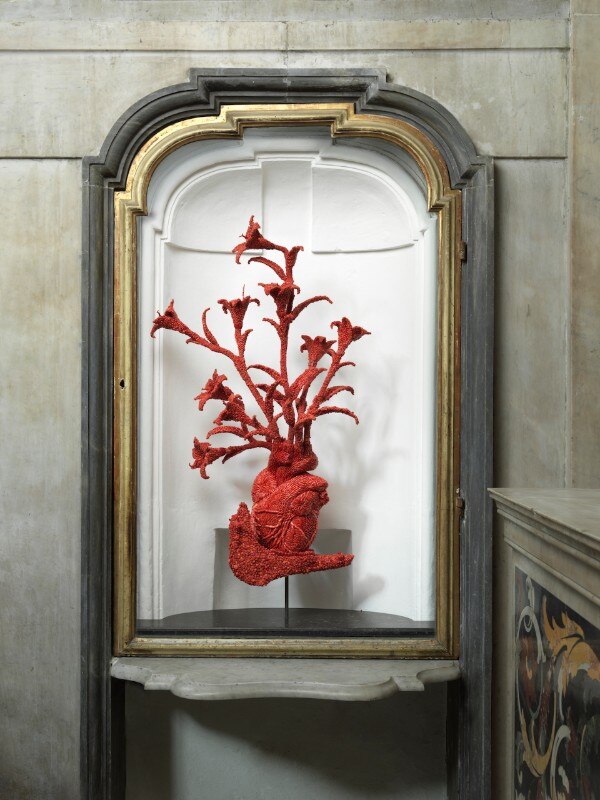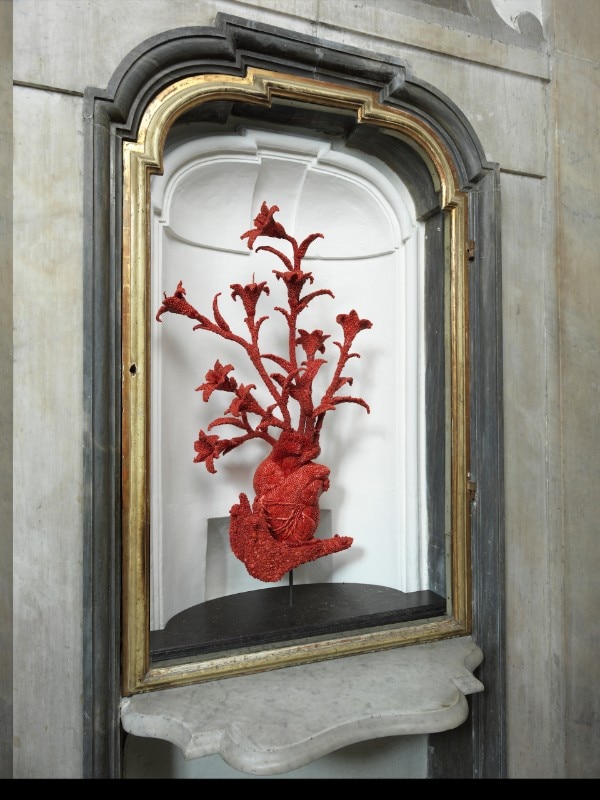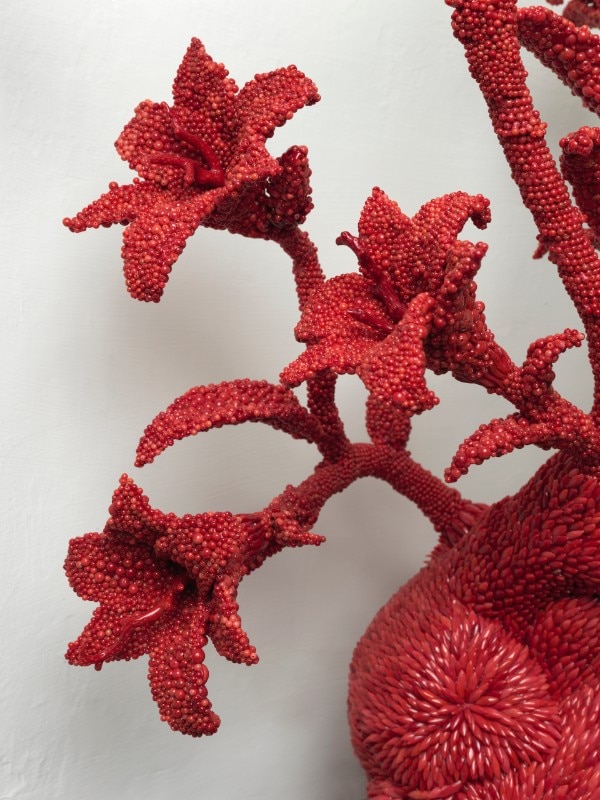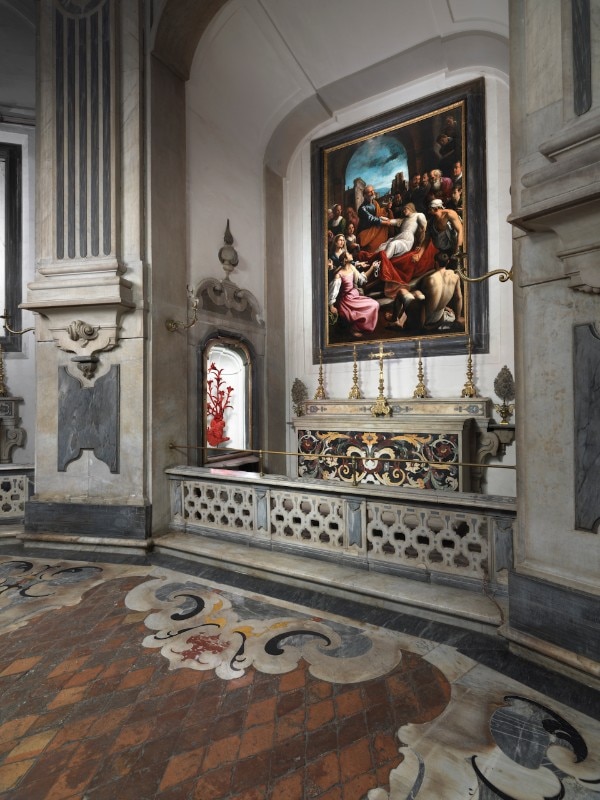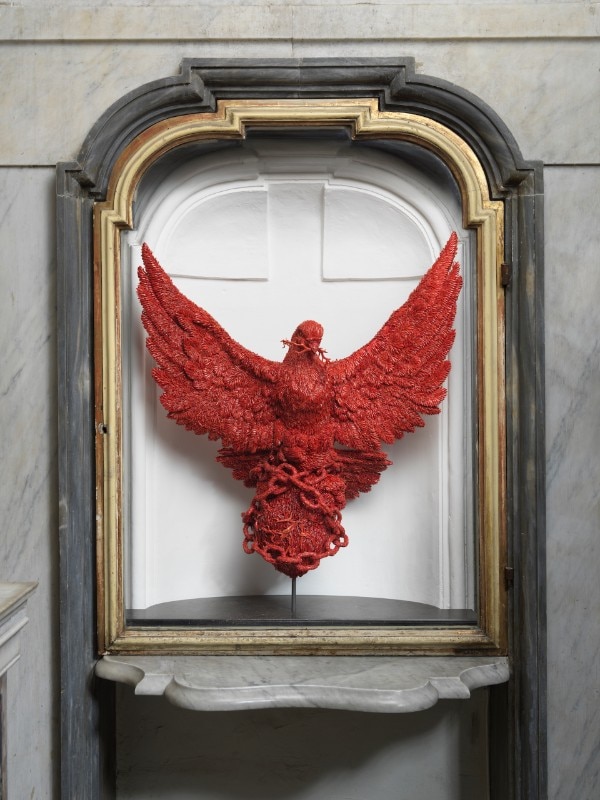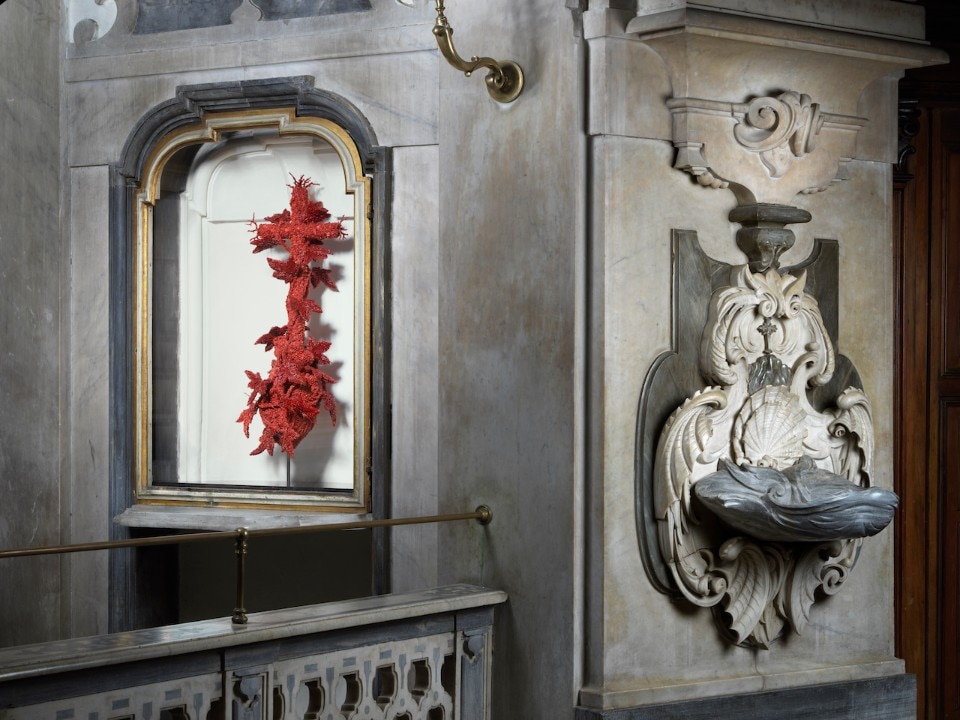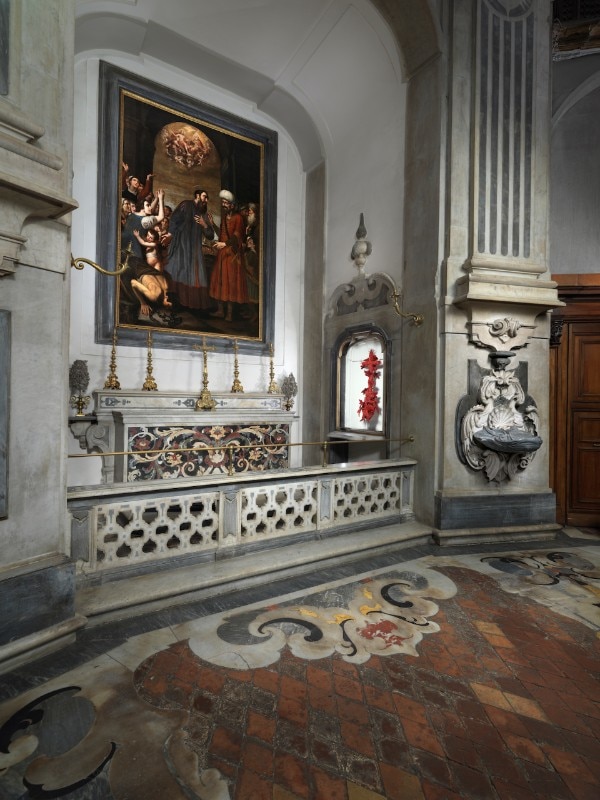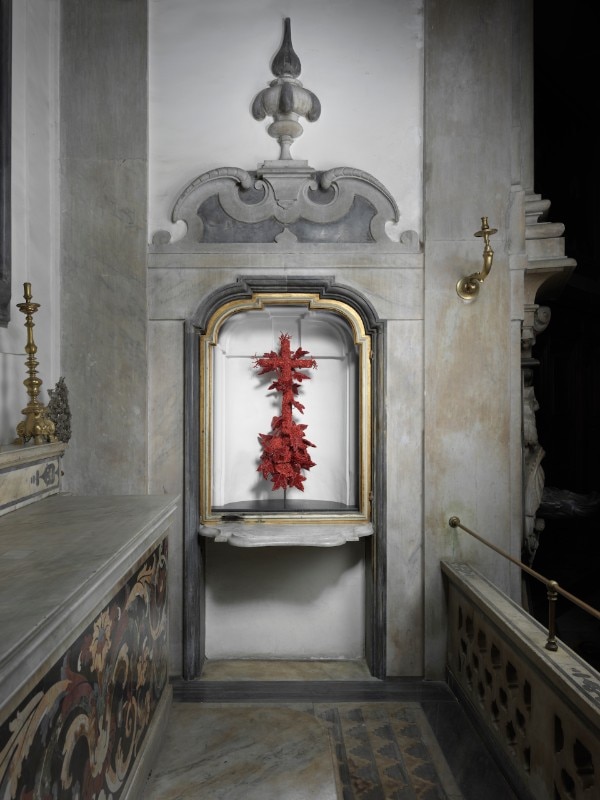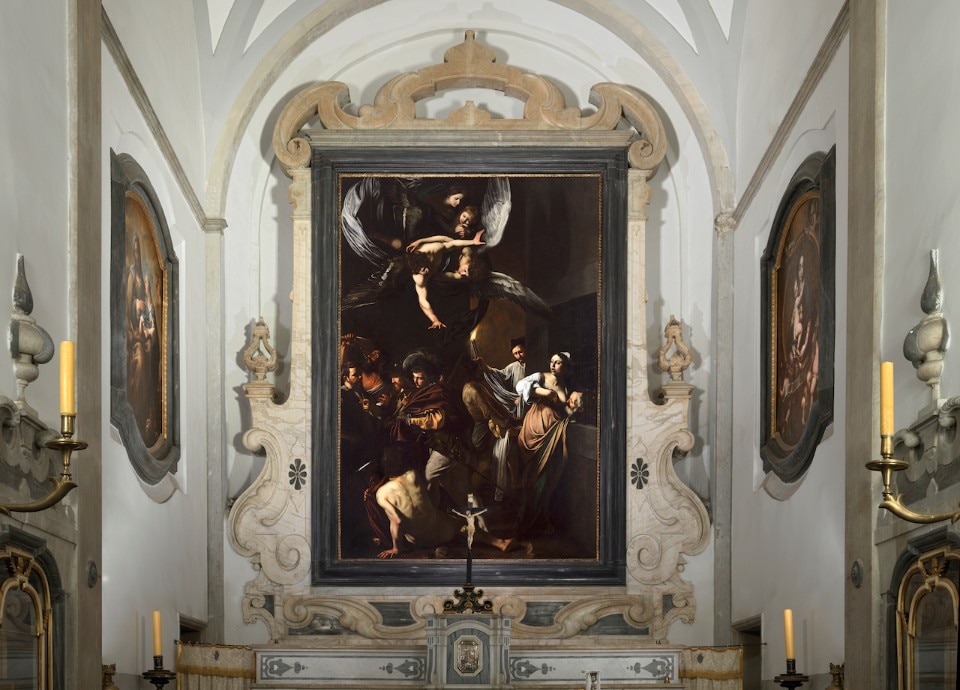Recently, Jan Fabre has offered an extraordinary gift to the city of Naples. Thanks to the support of collector Gianfranco D’Amato and businessman Enzo Liverino (owner of one of the oldest coral manufacturing companies in the Campania region), the Flemish artist has created a permanent installation of four sculptures for the Pio Monte della Misericordia Chapel.
Fabre’s unique way of working on the existing heritage, by managing to add something to a masterpiece that appeared to be already finished and not modifiable and by creating a relationship between works of art and ethical commitment has been an invaluable contribution to Naples. Fabre’s new project happens to be of great interest to the city, because it employs contemporary art’s typical strategies in an unexpected way.
The gift Fabre offered to Naples is in fact exceptional: he did not simply place a contemporary work of art in an ancient and prestigious church. And it isn’t just a mere attempt to promote and relaunch a touristic destination. In fact, the place where this permanent exhibition takes place is not only one of the most important places in the city’s both from a geographical and historical point of view, but it is also characterized by functional and social qualities that aren’t exploited just for cultural purposes.
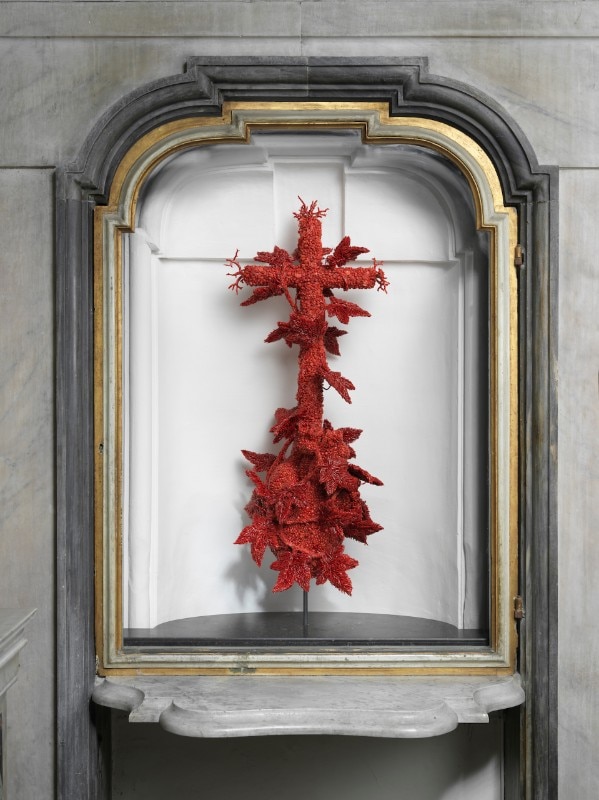
The objective of Fabre’s sculptures is first and foremost to expand the collection of the Pio Monte della Misericordia, which is the institution that for over four centuries has been uninterruptedly supporting the city’s population through charitable works. This is one of those many lay Italian institutions that have contributed to the civil history of the nation as well as to its national heritage thanks to its works of art, architecture relevance, and generous contributions.
We tend to underestimate the value of these institutions, maybe because they do not play an important role in the economy, or worse, because they are perceived as old relics. Instead, precisely because of their persistence in time, they show us their effectiveness in promoting financial support and social progress.
The old Pio Monte church was established in the 17th century, and it is famous for its vast historical and artistic heritage and its rich gallery of paintings by Massimo Stanzione, Jusepe de Ribera, Luca Giordano and Andrea Vaccaro. More recently, it has also started displaying the works of many contemporary artists, that created painting inspired by The Seven Works of Mercy.
The second floor of the building houses the Historical Archive and the Library, where documents from the fourteenth century are kept, as well as several private collections, including that of Aquino di Caramanico, with the precious parchment of the proclamation with which Thomas Aquinas became Doctor of the Church.
This immense collection of donations, aimed at building an artistic heritage, was used to support the activities that take place around the city and on the top floors of the building, where young people in difficult situations get an education through training courses or are taken care of during the week.
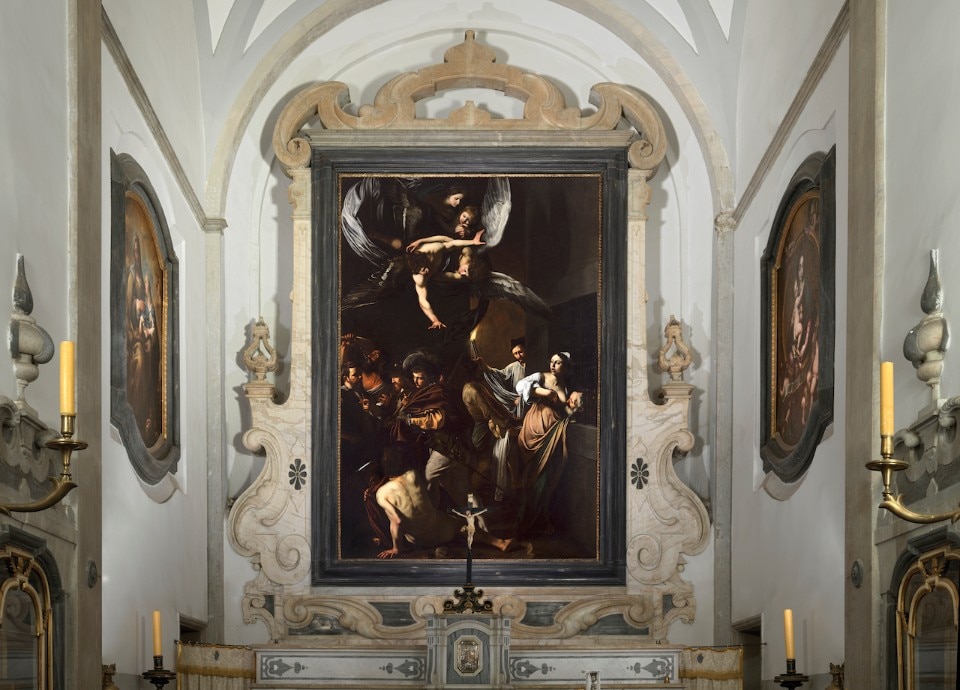
Last year, Fabre came to pay homage to the Pio Monte institution for the first time, when he placed his self-portrait “The Man Holding the Cross” at the centre of the Chapel, on the occasion of his “Oro Rosso” exhibition, which was held in collaboration with the Museum of Capodimonte and curated by Melania Rossi, who also supervised the creation of Fabre’s new works.
The great success of the “Oro Rosso” exhibition showed that it was now ok for Fabre to include more contemporary pieces of art into the church. He could now stop working on self-referential and decorative works and start focusing on a permanent structural contribution to the activities of the Pio Monte della Misericordia.
For those who do not know it, the church’s portico in via dei Tribunali, right in front of the San Gennaro obelisk, takes you straight to the city centre. The church is also the greatest landmark of Baroque art in Naples, since it houses an exceptional collection of paintings that illustrate the many activities of the institute over the years, including the Seven Works of Mercy, the masterpiece of Caravaggio in Naples.
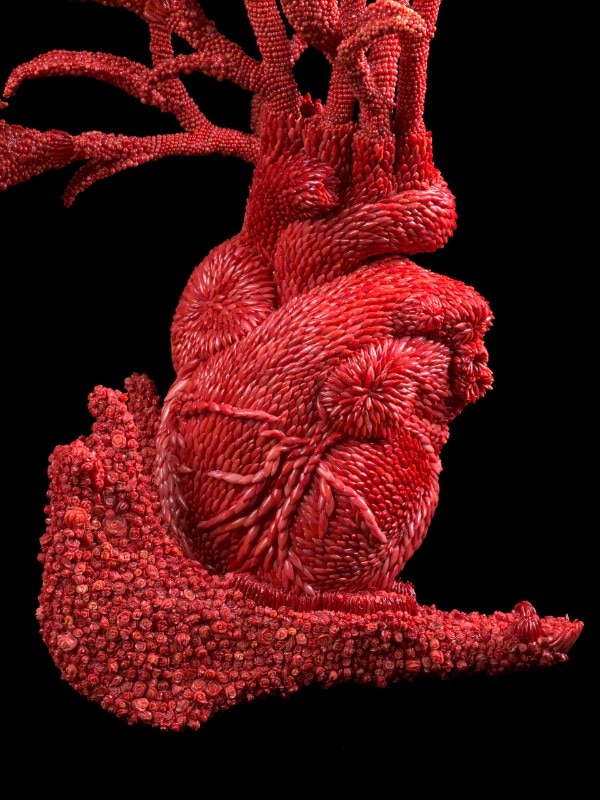
It is precisely Caravaggio’s masterpiece that inspired the themes and details of the sculptures that Fabre decided to create for the Monte Pio. He wanted to find a measured and necessary complementarity with the works already present in the church. Before, the four niches at the side of the chapel passed unnoticed, because of the Seven Works of Mercy by Caravaggio stealing the spotlight – and rightly so. They had been waiting for centuries to be finally filled with something worthwhile.
It was a paradoxical condition for these four niches in one of the most important churches of Naples, which is a city full of nooks and cavities, altars, niches, shelves and holes filled with statuettes, votive offerings, images and devotional objects.
Filling the city with this objects is an on-going process, which is deeply rooted in the past but is also being constantly renewed, and that seems to want to resist to an increasingly ephemeral and immaterial present. A universe of objects that bears witness to events, human misfortune, compensation and rescues. Fabre seems to have understood this reality, and he made it his own by creating his sculptures.
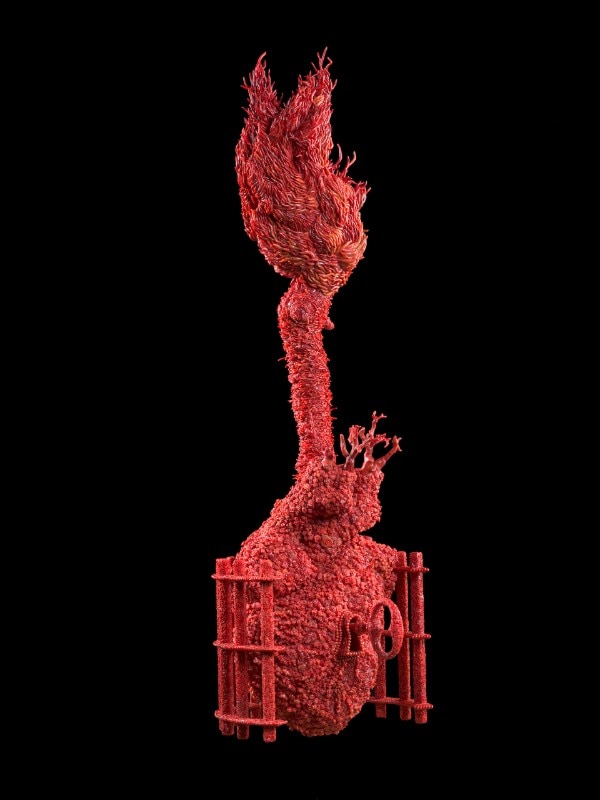
The four interpretations of the Seven Works of Mercy are made by turning roses, pearls and half pearls, traditional Neapolitan horns and fragments of coral into figurative objects. The heart, the thematic focus of the work, is combined with always different elements: the lily, the dove, the donkey jaw and the cross, work as symbolic elements that represent the charity.
In the shadowy gothic atmosphere of the Chapel, which has always helped to bring out the brightness of Caravaggio’s paintings, the niches find their own light, thanks to the coral sculptures made by skilled craftsmen in Torre del Greco with materials coming from abroad.
An exceptional and significant syncretism originates in the eccentric context of Naples: here artistic purposes can take unique directions that would be unthinkable everywhere else. A place where art lovers can turn into devotees that want to make the world a better place.


